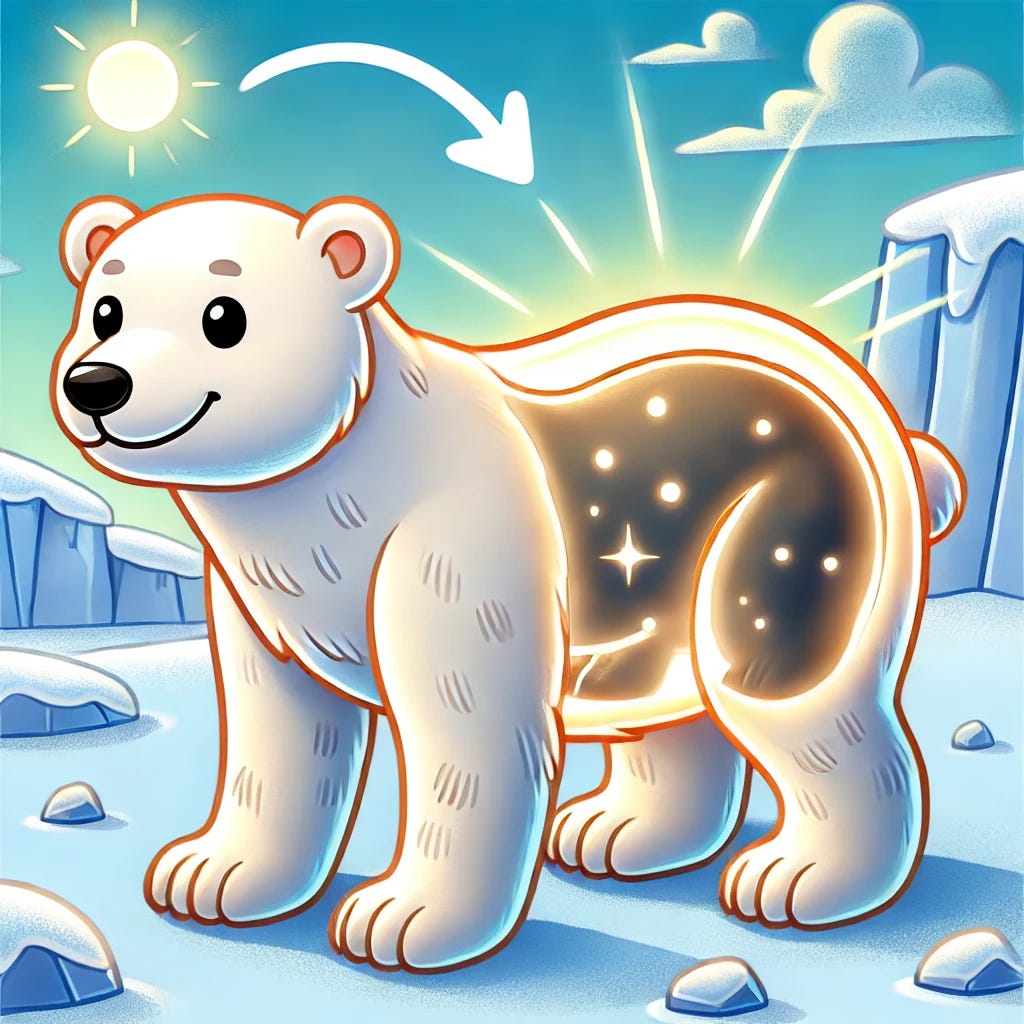Polar Bears: Nature’s Arctic Masters! 🐻❄️
Why Their Fur Looks White!!
Appearance: Polar bear fur appears white, but it’s actually made up of hollow, transparent hairs that reflect light, making them look white. This clever adaptation helps them blend into their icy surroundings for camouflage. Underneath that fur, their skin is black, which helps absorb and retain heat from the sun to keep them warm in the Arctic cold!
Baby Polar Bears: Babies of polar bears are called cubs. Polar bear cubs are born in dens during the cold Arctic winter. Cubs are born after staying 6 weeks in their mummies tummy. A mother polar bear usually gives birth to one or two cubs, which are tiny—about the size of a guinea pig—and weigh around 1 pound (450 grams) at birth. The cubs are born blind, toothless, and covered in fine fur, relying entirely on their mother for warmth and nourishment.
The mother stays in the den with her cubs for several months, feeding them with her rich milk, which helps them grow quickly. By the time they leave the den in spring, the cubs weigh around 20–30 pounds (9–14 kg) and are ready to explore the snowy world under their mother's watchful care.
Lifespan of Polar Bears: Polar bears typically live 15–18 years in the wild, though some can live into their early 20s. However, life in the wild is tough, and many polar bears don’t reach their full lifespan due to challenges like food scarcity, climate change, and competition for resources. In captivity, where they are protected and cared for, polar bears can live into their 30s.
Hunting: Polar bears are skilled hunters, relying on their patience, strength, and keen senses to catch their prey. Their primary food source is seals, particularly ringed and bearded seals, which they hunt using several clever strategies.
Polar bears are excellent swimmers, capable of traveling long distances in search of food, and they rely heavily on sea ice for hunting. However, as climate change reduces Arctic sea ice, finding food has become increasingly challenging for these majestic predators.
Polar bears are truly extraordinary animals, perfectly adapted to survive in one of the harshest environments on Earth. From their unique hunting skills to their remarkable ability to thrive in icy conditions, they are a symbol of the beauty and resilience of nature. However, the challenges they face due to climate change remind us of the importance of protecting our planet. By learning about and appreciating these majestic creatures, we can work together to ensure a safer future for them and their Arctic home. 🌍❄️


